“Nov. 1-The capture of the ground south of Valenciennes between the Rhonelle river and the Scheldt canal was of extreme importance so as to compel the enemy to evacuate the town. The Canadian Corps were holding the western approaches to the town and the western bank of the Scheldt canal, and their guns were able to batter the tongue of land where the 51st. Division had been fighting. An attack by Canadian troops in a northerly direction from about Aulnoy could thus be supported by their artillery fire from south, west and north, and offered the best and safest means of capturing Valenciennes.
The attack was made by the 44th. Battalion, of New Brunswick though originally recruited at Winnipeg, on the right, with the 47th. Battalion, Western Ontario, on the left. After taking Famars which again had fallen into enemy hands the 44th, fought their way into Aulnoy, where it was only after hand-to-hand fighting that the enemy was overcome.”
Some words from the book “Canada’s Hundred Days – With the Canadian Corps from Amiens to Mons, Aug. 8-Nov. 11, 1918” (John Frederick Bligh Livesay), from November 1st, when the young Swede Carl Frederick Youngberg went missing at the battlefield, later on declared killed in action.
Who was the young Swede? Where did he come from, and where is his final rest? I will try to tell you the story.
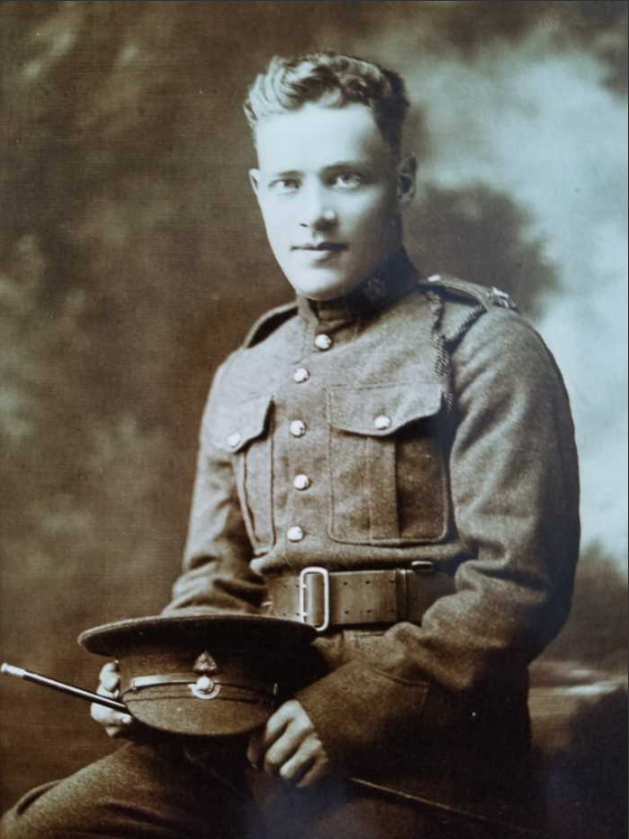
Carl Fredrick Youngberg, or Karl Ferdinand Ljungberg, was born in Sweden June 2nd, 1896, and raised by his parents, his mother Jenny Kristina Liljegren and his father Adolf Ljungberg. Karl had six siblings, Tekla, Ida, Marta, Ruth, Alma, and Gerda. Karl was the only son in the family. Karl was born in the small parish of Vä in Kristianstad county in the southern part of Sweden, and moved after about one year to the place where he lived when he left Sweden for North America, Skegrie, in Malmöhus county, far down south in Sweden.
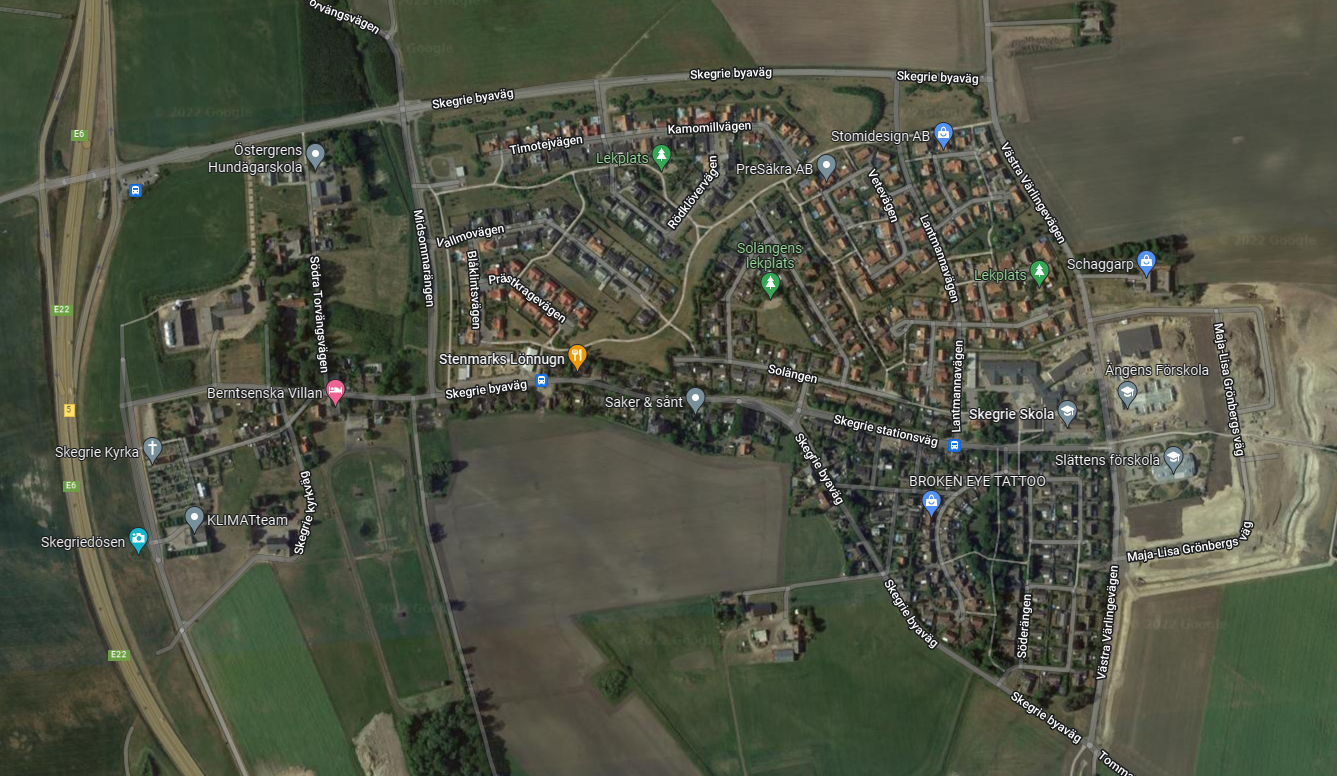

Karl and his family moves to North America in August 1902, when Karl was only six years old. His mother takes all the kids on the trip over the Antlantic. When I read the Swedish church books, it looks like his father Adolf, the tailor, went over before his family, already in september 1901. which I think was quite common these days.
The transport documents also tells us the same thing.
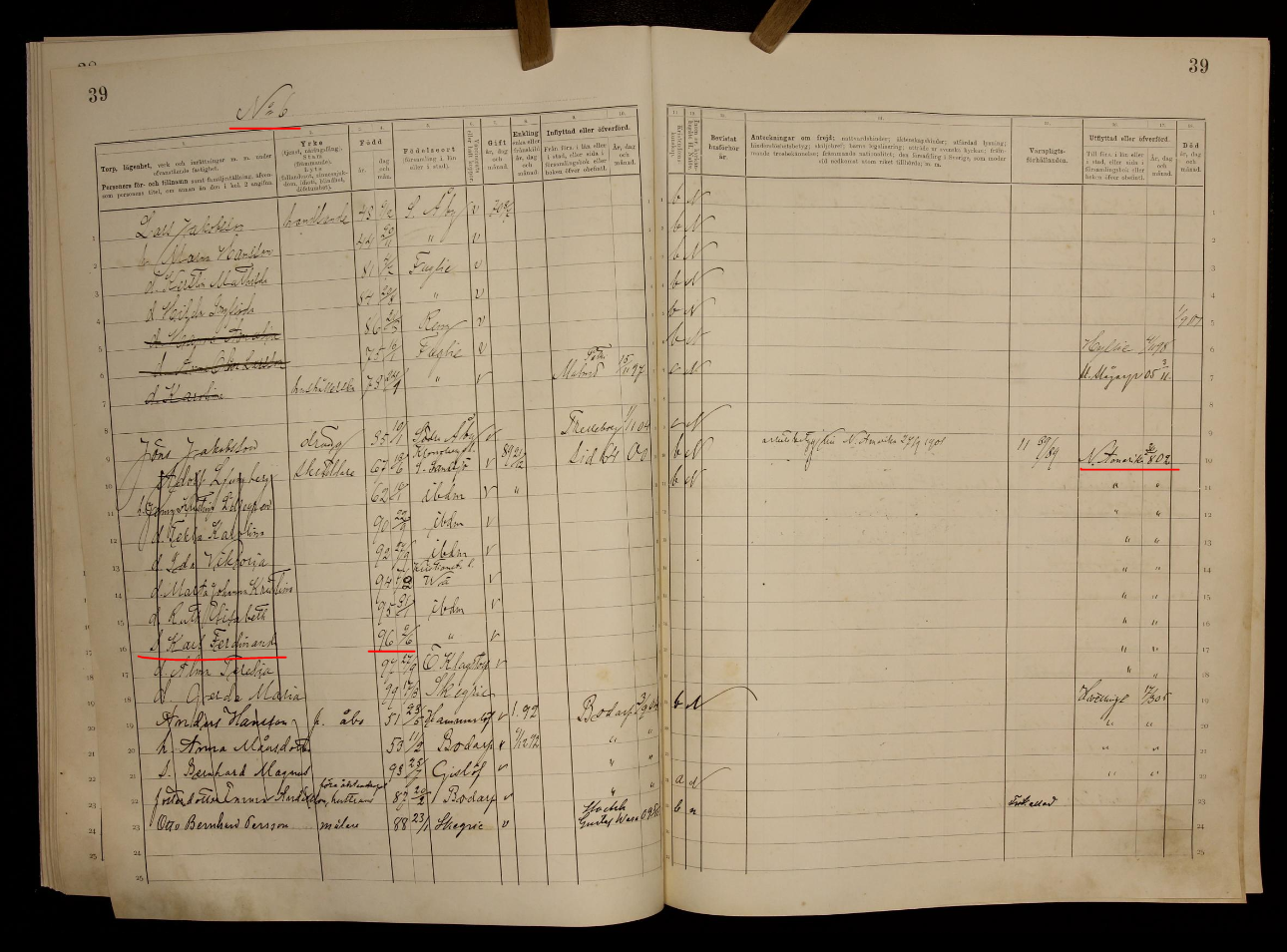



The census documents tells us that the family settled down in St. Paul, Minnesota, after have arrived to Quebec, Canada.
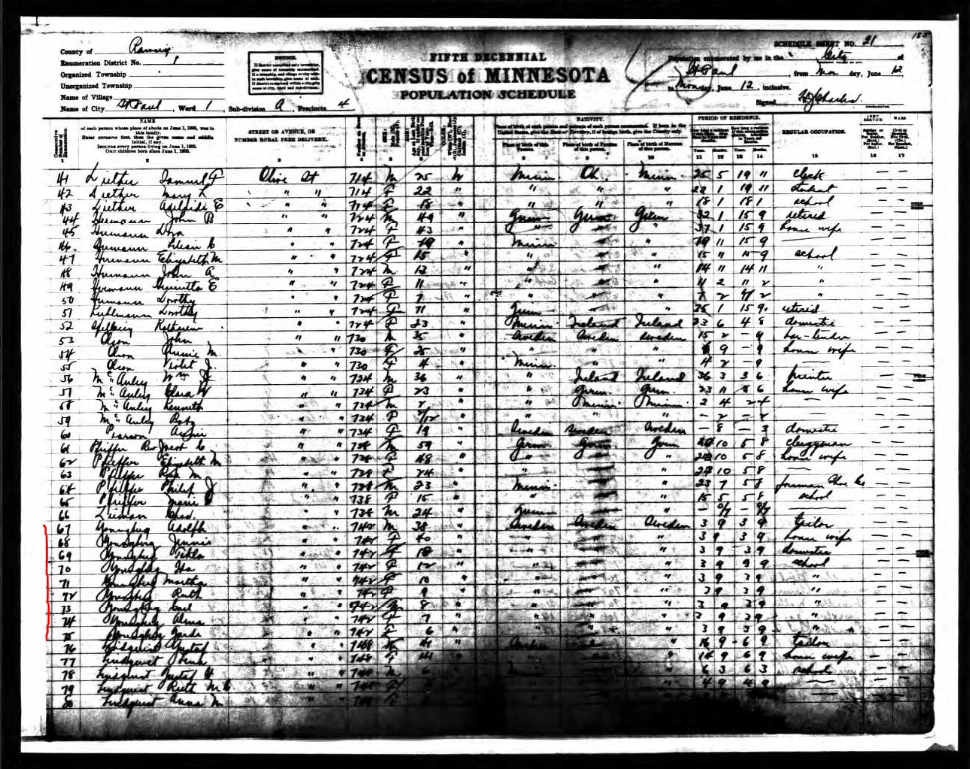

Karl stated his address as St Paul, Minnesota, in his attestation documents for the Canadian Overseas Forces, in Winnipeg, Manitoba. He states that he is born in Stockholm, but as in many cases, when Swedes left Sweden when they were young, they had sometimes hard to remember the exact Swedish location of their place of birth. Below you will also see in his draft papers for the American Forces that he states that he is born in Småland Landscape, but Vä belongs to Skåne Landscape.
Karl left Canada from Halifax, Canada, for Europe. He arrived in England in October 17, 1917 on the Ship S.S Metagama.
He becomes wounded in his hand by a Gun Shot Wound and is treated in Etaples, at the General hospital, in the beginning of September 1918, almost a year from when he arrived in England.
Karl is fighting for the 44th Canadian Infantry battalion when he is killed in action that day, November 1st, in 1918. The unit is fighting in the area around the region of Alnoy, south of Valneciennes, France, where Carl initially is declared “Missing”.
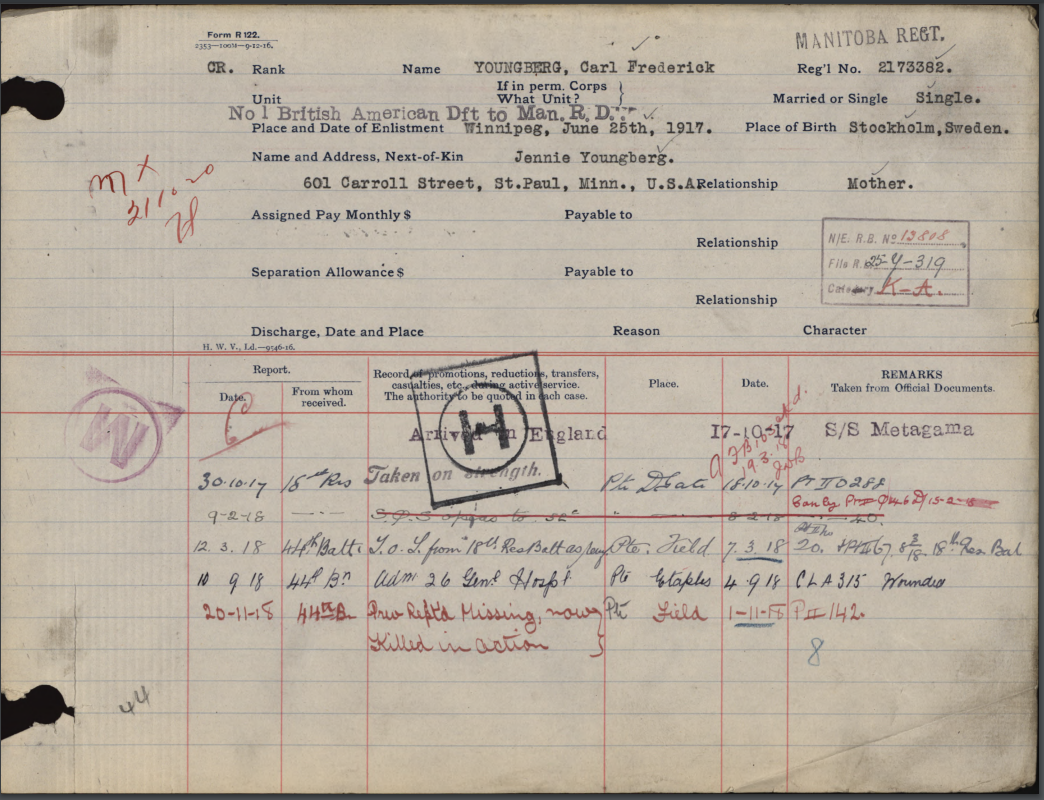


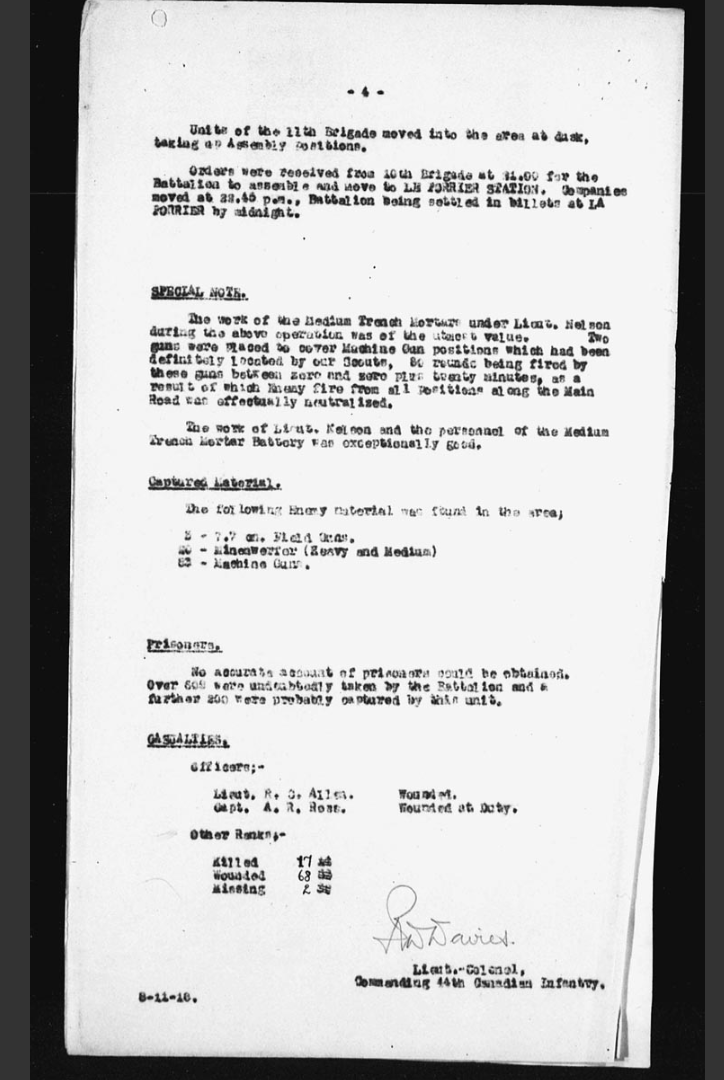

Karl is only at an age of 22 when he is killed. I know that he also was drafted for the American Army in June 1917, but right now I don’t know the reason why he chose to join the Canadian Forces instead. In my research I have a couple of individuals that emigrated to North America, was drafted for the American Forces but later on joined the Canadian Forces for the fightiings at the Western Front.
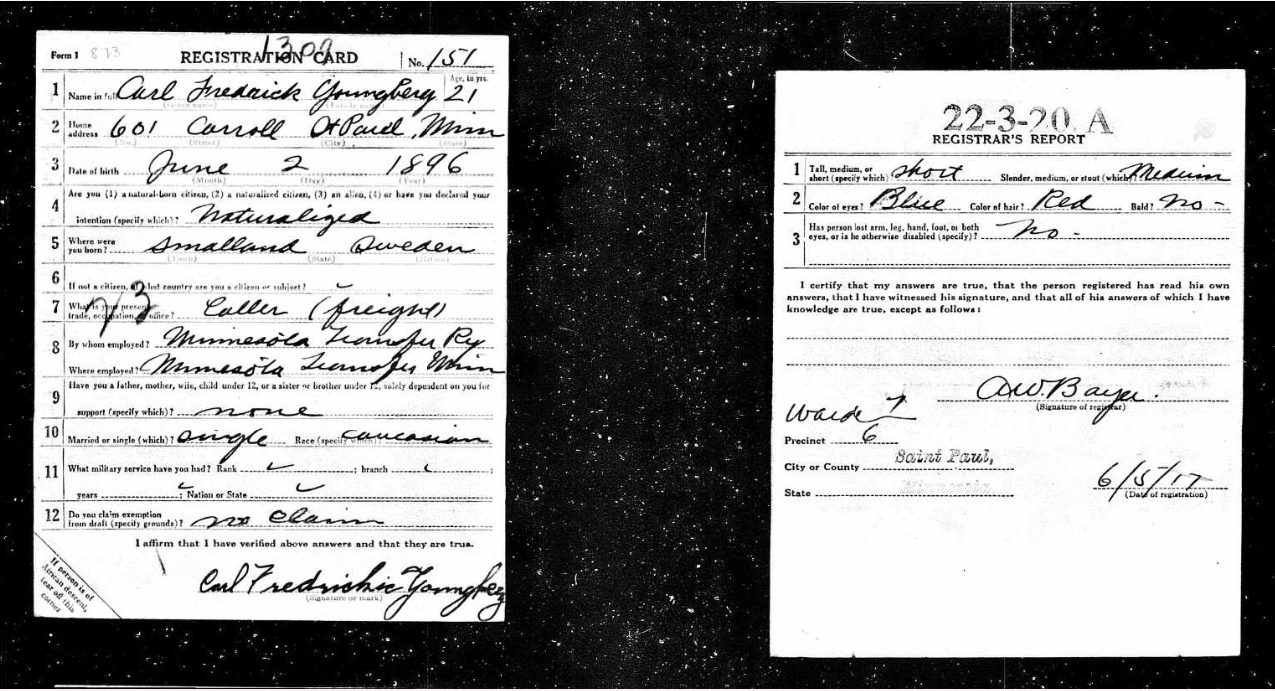
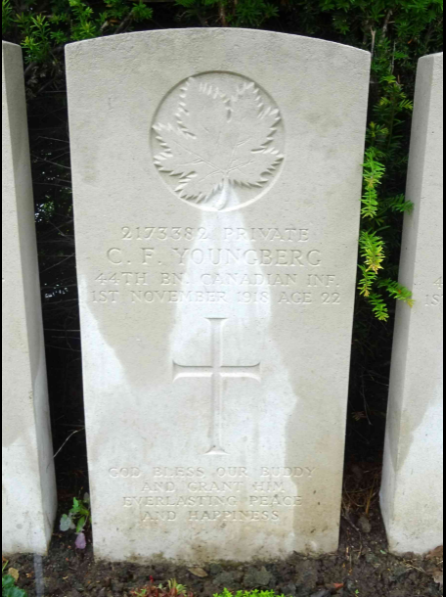
Carl is buried at Aulnoy Communal Cemetery in France. I will try to visit him this summer in July.
May Carl rest in peace.

I stumbled upon this. Carl is my great-uncle. I’ve always wondered why he chose to join Canadian forces. I keep him in my heart. His sister, Ruth, is my great-grandmother. She passed when I was 18. I knew her well.
Thank you for the information, I will try to visit him this year in July, when I am down in the area again.